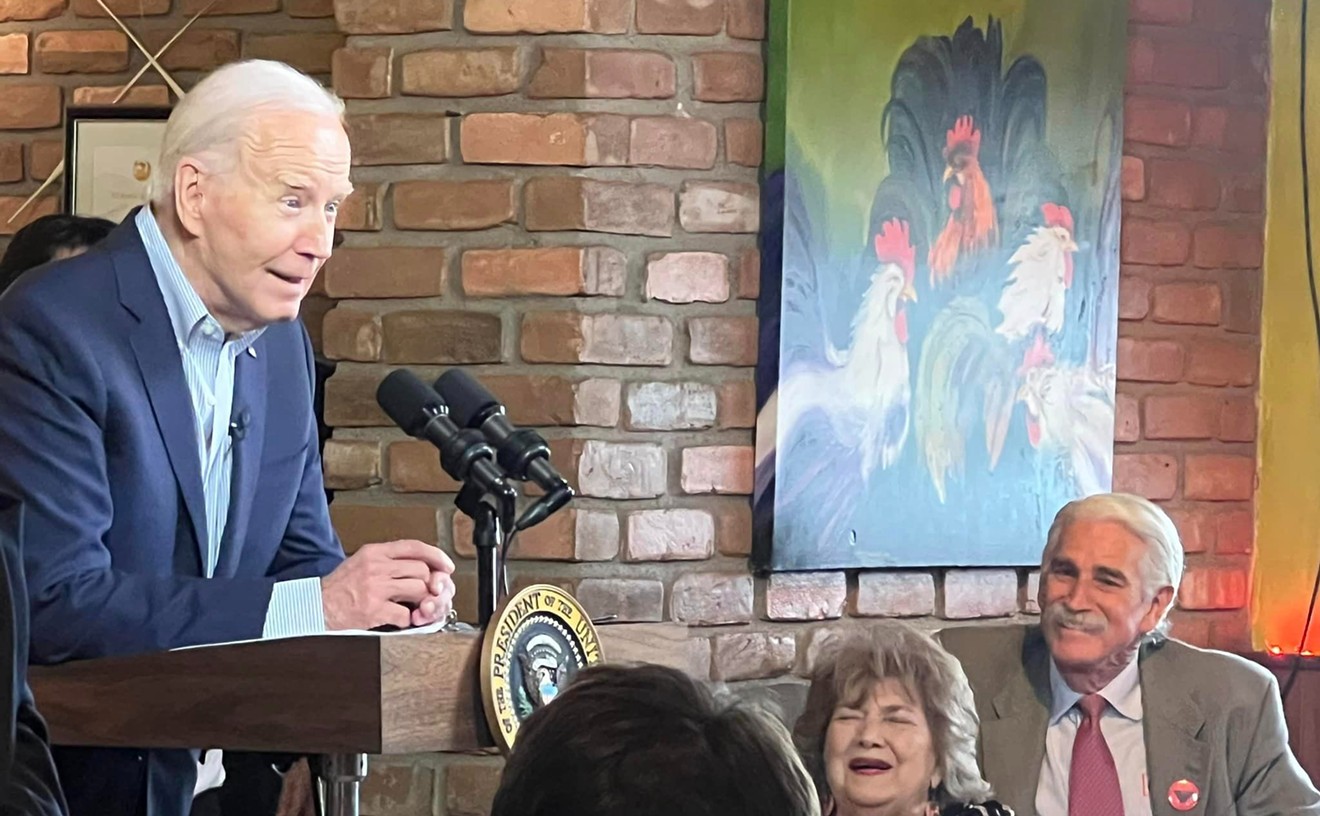That's apparently just how government officials wanted it.
Phoenix Mayor Skip Rimsza claims that the $400 million Sumitomo Sitix plant will anchor a region of commerce and industry so that residents of northeast Phoenix won't be so dependent on jobs downtown.
But many of those residents wish the city had checked with them before locating a major factory that uses hazardous chemicals less than a mile from their homes.
In the summer of 1995, the city guided zoning changes through a complex process of public meetings while keeping quiet about who the changes were for. The city council then voted for those changes under emergency provisions, limiting the possibility of a timely challenge by residents. Meanwhile, Sumitomo bulldozers were already grading the land--months before the company actually took possession of it.
By the time Desert Ridge residents had realized who and what was moving into the neighborhood and organized opposition to the plant, it was already too late to force the zoning changes to a vote.
That didn't keep anti-Sumitomo protesters, mostly midlife political neophytes, from mobilizing a noisy opposition as the wafer plant began to rise amid desert scrub. The group is currently suing the city, hoping that a judge will void the zoning changes and halt construction.
Besides complaints about the city's fast-track zoning methods, residents have also expressed concerns about the amount of groundwater and waste treatment the plant will require, as well as the potential for disaster in the case of a release of hydrofluoric acid, a solvent used in silicon-wafer production.
Some of the sudden and fierce opposition to the plant is no doubt a result of pure NIMBYism. But for every anti-Sumitomo protester who simply doesn't want a factory in his backyard, there's another motivated by continuing revelations about what city and state officials were willing to do to bring Sumitomo to town.
When details of Sumitomo's development agreement came out, government officials were hard-pressed to explain why they'd felt compelled to hand over so much in incentives to a cash-rich company.
The city, for example, offered to pay for $8 million to $10 million in infrastructure improvements, including the drilling of a high-capacity well (after, that is, telling the public that Sumitomo would use no groundwater).
The state, meanwhile, held out the possibility of creating a foreign trade zone and reducing Sumitomo's property taxes by 80 percent. Prudently invested, those tax breaks, over the life of Sumitomo's 99-year lease, could mean literally billions in savings for the conglomerate ("Sumitomo Wrestling," December 7, 1995).
But perhaps more troubling than these public offerings of assistance to Sumitomo was the revelation of surreptitious efforts that government officials were making on the company's behalf: The city not only rezoned the property in a secretive manner, but later helped Sumitomo gather intelligence about the citizen opposition that had sprung up ("Public Theatre," July 25).
Documents obtained from city files showed that Sumitomo, through its public relations firms, had infiltrated meetings held by anti-Sumitomo residents and provided city officials with reports of their surveillance, had provided "talking points" for speeches given by Rimsza and Governor Fife Symington, had written a script for city employees to follow to shore up public opinion of Sumitomo, and had asked business development agents to take a "friendly" Arizona Republic reporter to Japan for a glowing report on Sumitomo's plants there.
Despite the controversy that has surrounded it, construction of the plant is only a few weeks behind schedule. Long, low, squarish buildings are in place, and Sumitomo Sitix president Robert Gill says the first processing equipment will be installed in the factory at the end of October.
Rimsza still claims the plant will be a boon to northeast Phoenix, which he says needs jobs the factory can supply. But residents point out the plant will be located in an expensive residential neighborhood where few of the locals will be enticed by $15,000 operator jobs.
An effort to recall Rimsza over the Sumitomo controversy failed before it really got started. But a drive to oust city councilwoman Frances Emma Barwood met with more success. Recall petitioners turned in about 3,500 signatures, assuming that they'd easily have enough verified to make the 2,447 minimum needed to force a Barwood recall. But city clerk Vicky Miel rejected the recall effort last month, saying that only 2,434 signatures--13 short of what the drive needed--turned out to be genuine.
Anti-Sumitomo coalition members Chris Klein and Pete Creelman have filed a pro se lawsuit in Superior Court, claiming that some 37 signatures were improperly rejected by Miel.
--Tony Ortega










